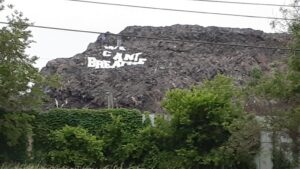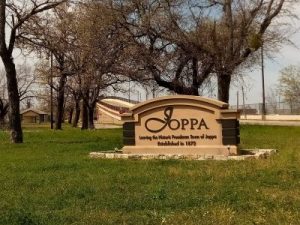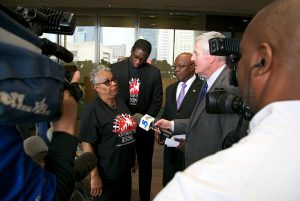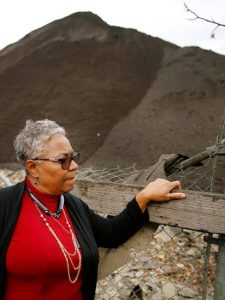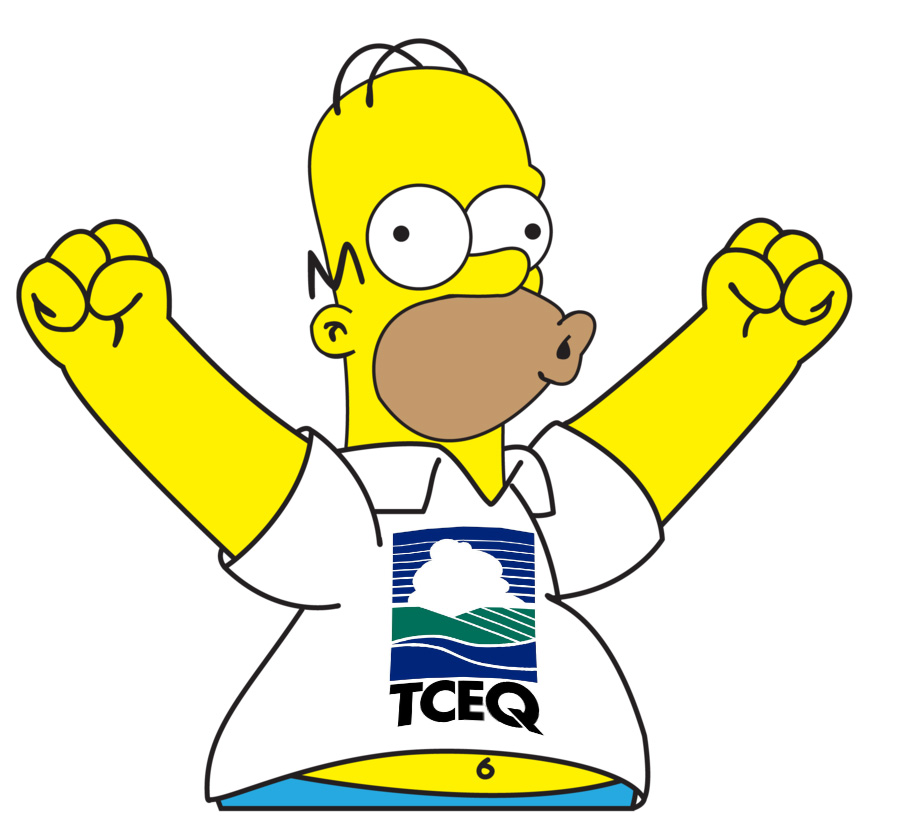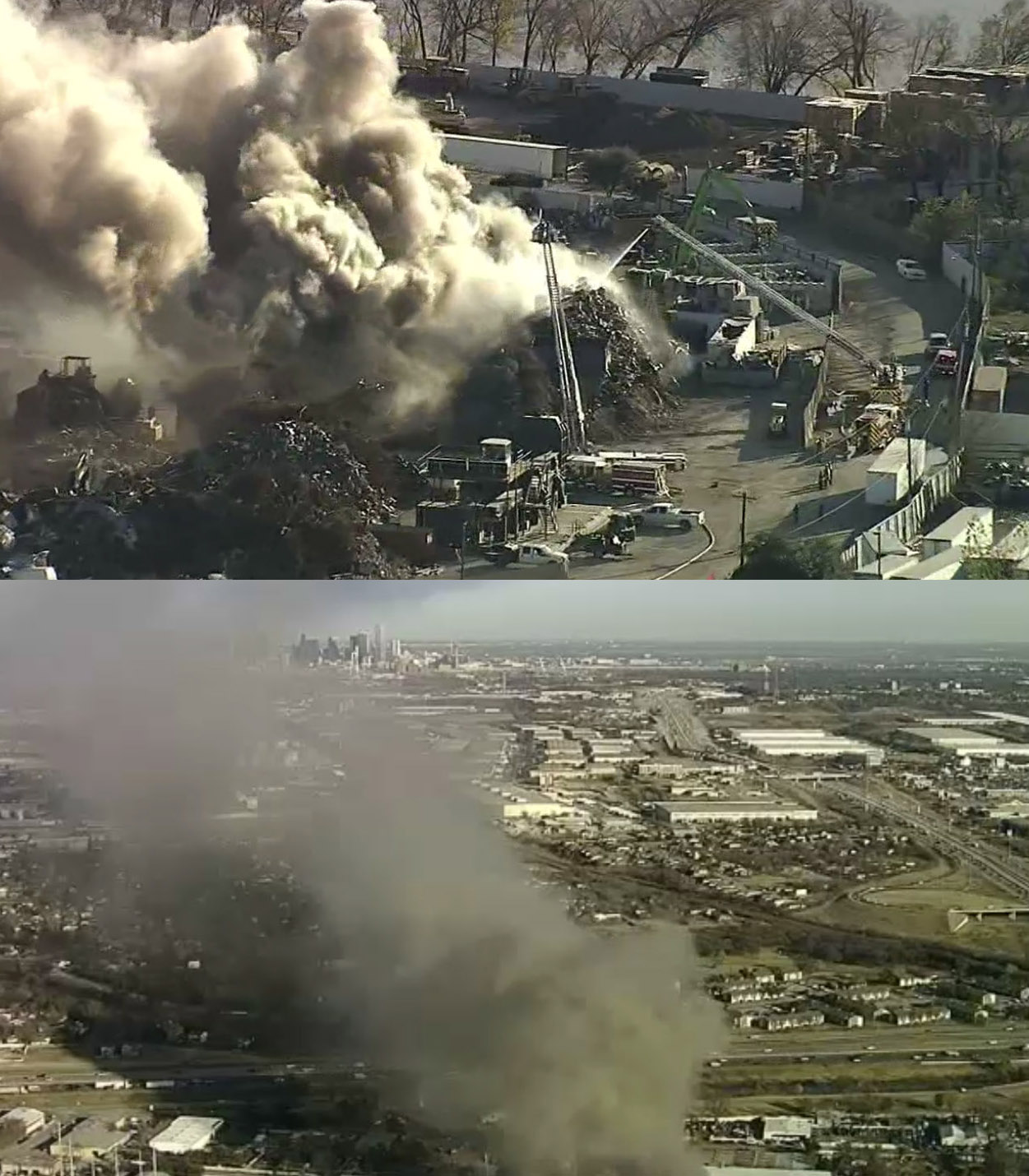air toxics
One of Dallas’ Biggest Polluters Appears to Be Breaking the Law in West Dallas
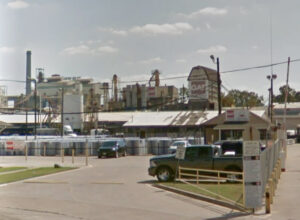 FOR IMMEDIATE RELEASE : 8 am Wednesday July 21
FOR IMMEDIATE RELEASE : 8 am Wednesday July 21
Contact: Raul Reyes Jr.: President, West Dallas 1 – 469-880-3811
Evelyn Mayo, Neighborhood Self-Defense Project – 774-810-0849
“GAF is the new RSR.”
Alliance Says West Dallas Polluter is Operating Illegally and Poisoning Residents…Just Like Infamous Lead Smelter. And They Want it Gone.
Giant shingle factory doesn’t have needed permits from City; Monitors show its likely violating federal air pollution standards too
(Dallas)– In a stunning replay of West Dallas environmental justice history, a new alliance of
groups says the largest polluter in West Dallas lacks required City of Dallas documents to operate, and could be in potential violation of federal air pollution standards. It’s the same circumstances that forced the former RSR lead smelter, once also located on Singleton Boulevard, to close in the 1980’s.
“GAF is the new RSR” said Raul Reyes, President of neighborhood group West Dallas 1, and spokesperson for the new coalition of allies, “This factory is operating illegally, lacks basic pollution controls, and is too dirty to be doing business in West Dallas neighborhoods. And just like RSR, it should be closed.”
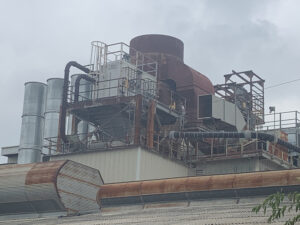 GAF has operated its West Dallas asphalt shingle factory for so long a lot of its pollution is “grandfathered” – unfiltered by any modern controls like “scrubbers” despite that technology being capable of removing up to 99% of sulphur dioxide emissions. In the last EPA inventory available from 2019, it was listed as Dallas County’s third largest air polluter with over 260 tons being spewed from GAF into surrounding neighborhoods that year alone. That includes 125 tons of Sulfur Dioxide pollution – more than any other facility in Dallas.
GAF has operated its West Dallas asphalt shingle factory for so long a lot of its pollution is “grandfathered” – unfiltered by any modern controls like “scrubbers” despite that technology being capable of removing up to 99% of sulphur dioxide emissions. In the last EPA inventory available from 2019, it was listed as Dallas County’s third largest air polluter with over 260 tons being spewed from GAF into surrounding neighborhoods that year alone. That includes 125 tons of Sulfur Dioxide pollution – more than any other facility in Dallas.
For years, surrounding residents and workers have reported sulfur-like rotten egg odors in the Singleton corridor around GAF, leaving them with headaches and nausea. But it’s the tiny pieces of soot being emitted from the facility that could get the company in trouble with the EPA. Using off-the-shelf Purple Air monitors for Particulate Matter, West Dallas residents independently monitored PM pollution around the GAF plant over the past two years. Results show levels of air pollution that likely violate both the 24-hour and annual national standards for PM 2.5 microns or smaller. If official EPA monitoring confirms the violations, the part of West Dallas around GAF, which hosts many other industrial polluters that are likely contributing to this pollution, could be declared a “non-attainment area” for PM pollution. GAF and other West Dallas PM polluters would have to submit a plan to decrease their emissions and new industries would be subject to stricter limits. RSR was also violating air pollution standards when the City of Dallas began to seek its closure in the late 1970’s.
Just like lead scientists believe there’s no “safe level” of exposure to PM pollution. A violation of its national ambient air standard is a dangerous condition that can leave lasting health harm among the hundreds of residents who live next to GAF, especially children.
Reviewing the results from the GAF monitoring, Dr. Natalie Johnson, a faculty member of Texas A&M’s School of 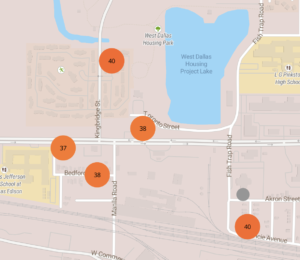 Public Health specializing in respiratory toxicology and environmental health warned, “If verified by EPA, these numbers are concerning. Exposure to levels over the EPA regulatory limits can lead to chronic diseases, such as heart disease, stroke, and premature death. The immune system, reproductive system, and developmental functions can also be harmed. The elderly, children, and infants are particularly vulnerable.”
Public Health specializing in respiratory toxicology and environmental health warned, “If verified by EPA, these numbers are concerning. Exposure to levels over the EPA regulatory limits can lead to chronic diseases, such as heart disease, stroke, and premature death. The immune system, reproductive system, and developmental functions can also be harmed. The elderly, children, and infants are particularly vulnerable.”
Janie Cisneros, who lives with her family just feet from GAF’s fence line and hosted one of the monitors said “I grew up on Bedford Street and GAF was always a big presence. Now that I moved back to raise my own family, I see how disgusting and unhealthy the air is. It often keeps me from playing with my daughter outside.”
This is the first time in Texas that new low-cost hyperlocal air monitoring by residents has revealed potential violations of a national air pollution standard. Despite years of complaints, there are no City of Dallas, State, or EPA monitors near GAF.
At the same moment GAF is being accused of creating hazardous levels of air pollution, a research of City Hall documents by staffers for the Southern Dallas Neighborhood Self Defense Project revealed that GAF doesn’t have a current Certificate of Occupancy or the Special Use Permit (SUP) from the City of Dallas it needs to be operating at the site.
The RSR smelter also never operated with the SUP it was required to obtain. More recently, the six-story dumping ground for the asphalt shingles that GAF and others produce, that became Shingle Mountain in Southern Dallas, was illegal from the first day it operated because it also lacked a required SUP and Certificate of Occupancy.
Armed with this new information, West Dallas residents notified the City of Dallas about GAF’s illegal status. WD1 representatives have been told the research is correct and the City is now investigating. Without the Special Use Permit, GAF’s shingle-making is a “non-conforming” use and the City could initiate the same proceedings it used to eventually close RSR.
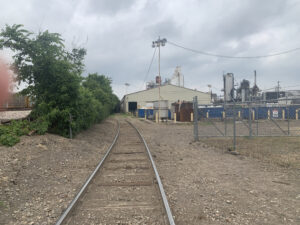 This dramatic news about GAF’s legal status and pollution levels comes precisely at the moment the company is applying for a renewal of its “Title V” operating permit from the State and EPA. Usually a mundane regulatory rubber-stamping, this process now has the potential to substantially add to the company’s headaches.
This dramatic news about GAF’s legal status and pollution levels comes precisely at the moment the company is applying for a renewal of its “Title V” operating permit from the State and EPA. Usually a mundane regulatory rubber-stamping, this process now has the potential to substantially add to the company’s headaches.
After months of requests by West Dallas 1 and elected officials, the Texas Commission on Environmental Quality (TCEQ) will be holding a virtual public hearing on the permit on July 29th at 7 pm.
Residents and others who want to ask questions or provide comments during the hearing may access the webcast by following this link:
https://www.gotomeeting.com/webinar/join-webinar
and entering 192-616-739 along with your email address or may call (512) 239-1201 at least one
day prior to the hearing for assistance in accessing the hearing and participating telephonically.
Members of the public who wish to only listen to the hearing may call, toll free, (415) 655-0060 and enter access code 569-744-316.TCEQ staff is recommending that you join and register at least 15 minutes before the hearing begins. A copy of the permit application can be viewed at the Dallas West Branch Library (2332 Singleton Boulevard). General complaints can be submitted in writing up to the hearing date to the TCEQ here:
https://www.tceq.texas.gov/assets/public/compliance/monops/complaints/complaints.html and objections to the permit renewal can be submitted here: http://www14.tceq.texas.gov/epic/eComment/.
Besides WD1, the groups lining-up to oppose the federal permit renewal are a combination of Dallas environmentalists, neighborhood associations, and social justice organizations, including Dallas Sierra Club, Downwinders at Risk, Public Citizen, and Southern Sector Rising.
After a review by TCEQ GAF’s permit renewal then heads to the Biden Administration’s EPA, which has pledged to work with communities of Color to reverse the kind of environmental racism the groups claim GAF is guilty of practicing.
“No permits. The wrong zoning. Dangerous levels of air pollution. Right in the middle of Black and Brown neighborhoods. Tell me how this ISN’T a repeat of the environmental racism West Dallas has been fighting for decades,” said Reyes. “We expect the Biden Administration to make good on its promise to end this kind of unacceptable discrimination.”
Send Your Public Comments for a SAFE Shingle Mountain Clean-Up
What:
Public Comments on the State’s Settlement with Shingle Mountain landowner
When:
Now thru Sunday, Dec 6th
How:
Use our ClickNSend email feature to send your comments to Texas Attorney General’s office in 90 seconds
Why:
To make sure residents’ health is protected during a Shingle Mountain clean-up
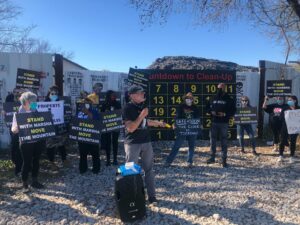
A four-month citizens’ campaign pressuring the City of Dallas to clean-up the Shingle Mountain illegal dump in Southern Dallas by the end of 2020 is on the verge of paying off.
Following a pattern that began in summer, on the very same October day groups planning civil disobedience at the dump site announced another action, the City signed an agreement with the Shingle Mountain landowner to take responsibility to “begin” a clean-up by Dec 25th. In return, the City received a check for $1 million from the landowner.
Meanwhile, the state has also reached an agreement with the landowner that clears the way for a clean-up. That agreement is now up for public comment until 12 Midnight Sunday, December 5th.
You can help us protect the health of the Choate Street families most affected by the clean-up by providing your public comments to this State agreement. Doing so sends a message to both Austin and Dallas City Hall that they’re being held accountable now that they’ve been put in charge of removing the 100,000 tons of illegal hazardous waste they helped create.
Public pressure is what’s brought us to this point. Public pressure must now 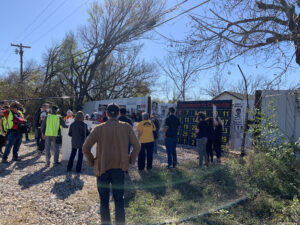 make sure the clean-up itself won’t increase residents’ exposure to hazardous materials like Silica, Formaldehyde, Petroleum By-Products and exotic glues and adhesives used to make shingles that are now crumbling into tons of microscopic particles.
make sure the clean-up itself won’t increase residents’ exposure to hazardous materials like Silica, Formaldehyde, Petroleum By-Products and exotic glues and adhesives used to make shingles that are now crumbling into tons of microscopic particles.
On Monday November 16th, members of Southern Sector Rising, Downwinders at Risk, Southern Dallas Shingle Movers and other protesters gathered at the d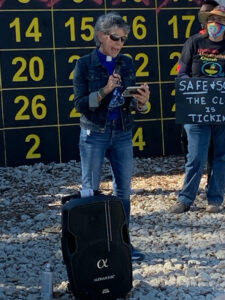 ump’s front gate for an action that hoisted and hooked a huge Clean-Up Countdown Calendar onto the eight-foot-tall metal fence that divides the site from South Central Expressway.
ump’s front gate for an action that hoisted and hooked a huge Clean-Up Countdown Calendar onto the eight-foot-tall metal fence that divides the site from South Central Expressway.
Designed as a giant-size desk calendar, it marked the 30 days of public notice ending on Sunday the 6th. Rev. Frederick Haynes of Friendship-West Baptist Church, Rabbi Nancy Kasten, and the Rev. Amy Moore joined Marsha Jackson and her neighbo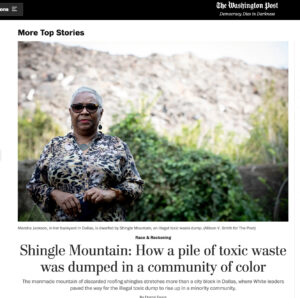 rs in speaking about the need to monitor the City and State during this critical phase.
rs in speaking about the need to monitor the City and State during this critical phase.
On the same day, a lengthy expose on Shingle Mountain by Washington Post national climate and environmental reporter Darryl Fears instantly made the dump a national poster child for Environmental Racism.
Two days later, Dallas Mayor Eric Johnson was asked about the Shingle Mountain clean-up by a Channel 8 reporter during his City Hall press conference on rising crime rates in Dallas. His revealing answer beginning with, “It’s really a legal problem,” confirmed the City always had the option of cleaning up the dump, but delayed doing so for over 18 months until it had received money from either the operators or landowners. Admitting that the City could have “solved” this problem early on, Johnson said the City choose not to because that would have made the City’s lawsuit against the landowners “moot.”
Moot is a lawyer’s term that’s defined as “of little or no practical value, meaning, or relevance; purely academic.” Instead of making their lawsuit moot by immediately cleaning up a site causing daily human health damage, Mayor Johnson and the City of Dallas rendered the health of Marsha Jackson and the Choate Street families moot. They made it of little or no practical value in the City’s approach. Of much greater value was the cash received by the landowners. The City sacrificed a street full of its own residents for a lousy $1 million.
In his three-m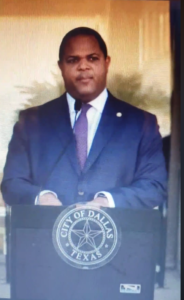 inute response, Johnson never uttered Marsha Jackson’s name, never addressed residents’ health issues, and never expressed regret, second thoughts, or apologies over the year and half the six-story waste pile harmed Choate Street residents. He never admitted the City’s multiple failures in code enforcement, zoning or environmental regulation that paved the way for Shingle Mountain’s creation. He complained how the City was put in a “tough position” – never considering how tough it might be for parents to watch helplessly as their child coughs-up pieces of ground-up shingles. Mayor’s Johnson’s answer was full of legal rationale but completely devoid of humanity or self-awareness. There were no people in it.
inute response, Johnson never uttered Marsha Jackson’s name, never addressed residents’ health issues, and never expressed regret, second thoughts, or apologies over the year and half the six-story waste pile harmed Choate Street residents. He never admitted the City’s multiple failures in code enforcement, zoning or environmental regulation that paved the way for Shingle Mountain’s creation. He complained how the City was put in a “tough position” – never considering how tough it might be for parents to watch helplessly as their child coughs-up pieces of ground-up shingles. Mayor’s Johnson’s answer was full of legal rationale but completely devoid of humanity or self-awareness. There were no people in it.
In short, it was an articulate if soulless synopsis of the City’s position regarding not only Shingle Mountain, but all environmental health problems in Dallas. Because at Dallas City Hall there is no such thing as human-centric environmental problems. What was the City’s first legal response to Shingle Mountain? It wasn’t to cite what an illegal awful abomination it was, but to take it to court over storm water violations. There were no people to worry about. Besides the inability of the City to protect its own residents from illegal hazards is the fact that it continues to treat Choate Street residents as spectators to their own disaster. Marsha Jackson is the Invisible Woman.
In May the Dallas City Council unanimously rejected the pleas of Ms. Jackson and Southern Sector Rising to re-establish the Dallas Environmental Health Commission to give an institutional voice to their concerns within City Hall; to put people back into the mix along with tree planting and water conservation. The Council turned its back on her – again.
That’s why your public comments about maintaining the safety of the pending clean-up are important.
Please show the City of Dallas that you care about Marsha Jackson and the families on Choate Street – even if it doesn’t. Thanks.
CLICK HERE TO SUBMIT YOUR COMMENTS
Robert Wood Johnson Foundation awards grant to Texas A&M and Downwinders at Risk for Joppa Environmental Health Project
Monies will fund unprecedented study of link between health and air pollution in Dallas Freedman’s Town; first effort of its kind in Texas
What’s believed to be the single largest environmental health research investment in a Texas neighborhood was awarded today by the Robert Wood Johnson Foundation to examine the links between human health and air pollution in the Joppa community of Dallas.
 Texas A&M and Downwinders at Risk’s Joppa Environmental Health Project was selected as one of only 16 national proposals funded by the Foundation’s Interdisciplinary Research Leaders grant. Between now and 2022, over $350,000 will be spent by Texas A&M scientists trying to understand the correlation between Particulate Matter air pollution and the health of the Freedman’s Town’s residents.
Texas A&M and Downwinders at Risk’s Joppa Environmental Health Project was selected as one of only 16 national proposals funded by the Foundation’s Interdisciplinary Research Leaders grant. Between now and 2022, over $350,000 will be spent by Texas A&M scientists trying to understand the correlation between Particulate Matter air pollution and the health of the Freedman’s Town’s residents.
Cecilia Wagonner, a member of the Joppa church that hosted a community meeting on air pollution monitoring last December, was enthusiastic about the news. “I want to know the truth and nothing but the truth about air quality in our historic neighborhood. This is definitely good news. Let environmental justice be served.”
Per capita, Joppa is the most polluted neighborhood in Dallas. On one side is the Trinity River. On the other three sides are an asphalt batch plant, Railroad switch yard, large asphalt shingle factory, a concrete batch plant, and Interstate highway. It’s directly downwind from the largest methane air p olluter in Dallas – the City’s McCommas Landfill methane energy recovery unit.
olluter in Dallas – the City’s McCommas Landfill methane energy recovery unit.
Since PM air pollution monitoring began there on August 31st as part of the new SharedAirDFW air monitoring network, Joppa’s PM levels have averaged significantly higher than other sites.
Two Texas A&M scientists based in College Station will lead the new Project. Dr. Natalie Johnson, is an A&M toxicologist specializing in the health effects of Particulate Matter air pollution, and Dr. Ping Ma, is an A&M behavioral and social science researcher who previously worked at Dallas Children’s Hospital specializing in health disparities and social determiners of health. Downwinders will assist with community canvassing and outreach efforts as well as provide technical support through its 11-Joppa based SharedAirDFW network monitors.
They’re now all charged with collecting evidence to discover whether Joppa has higher rates of PM air pollution and health problems than other communities, and understand how differences in daily levels of PM affect residents’ health.
“PM represents a significant ‘unseen’ health risk related to cardiovascular disease, chronic respiratory disease, including lung cancer and asthma, as well as effects on infant development and brain health,” said Johnson. “SharedAirDFW’s real-time pollution monitors will help make this threat ‘seen.”
Ping pointed out the study will be the first academic-community collaboration of its type in Texas. “Our findings will facilitate understanding of the air pollution risks Joppa residents face as well as generate community-based solutions to help create a new culture of environmental health in Joppa.”
Participa nts chosen for the IRL process also become students who receive training in the latest research methods and constant feedback from panels of experienced scientists and experts.
nts chosen for the IRL process also become students who receive training in the latest research methods and constant feedback from panels of experienced scientists and experts.
Grant monies will pay for staff time, graduate assistants, technology, travel, and community outreach over a three-year period.

The IRL grant is the first research project attracted by the SharedAirDFW regional air monitoring network that debuted in September, but Jim Schermbeck, Director of Downwinders, predicted it wouldn’t be the last. “This network makes all kinds of new comparisons and studies possible. In this case, residents and researchers are using it to document Joppa’s air pollution burdens and assist residents in relieving those burdens. That’s a first for Dallas, and Texas.”
From now until the end of the year the Project partners will be assembling their local contacts, refining their timeline and methodology, and getting ready to begin research in early 2021.
Help us Move Shingle Mountain



Choate Street families in Southern Dallas, including this child, and Ms. Marsha Jackson (pictured above) are still living under 100,000 plus tons of hazardous waste that was illegally dumped without their knowledge or consent.
It’s been almost three years since dumping began and two since the residents forced the dumping to stop, but the Mountain still remains, causing respiratory and neurological health problems for everyone on the street.
Shingle Mountain remains despite the City of Dallas having the legal authority and money to remove it. The City has had both for the entire three-year existence of the dump but has chosen to delay a clean-up in order to try to get the original operators to pay for it. That’s hasn’t happened.
On August 5th an alliance of over 30 groups, including Downwinders, sent a letter to the Dallas City Council and City Manager stating that if the City did not begin removing Shingle Mountain by October 1st, they would begin to do it themselves.
 On August 29th, many of those same groups participated in the Shingle Mountain Accountability Convoy, a mobile four hour protest that saw the conviction of five elected officials for “reckless disregard for human life” in mock trials with the Shingle Mountain float as a centerpiece.
On August 29th, many of those same groups participated in the Shingle Mountain Accountability Convoy, a mobile four hour protest that saw the conviction of five elected officials for “reckless disregard for human life” in mock trials with the Shingle Mountain float as a centerpiece.
10 days later the City put out a bid request for the job of removing the waste from Shingle Mountain. That process is over on October 5th. Despite this positive development the Dallas City Manager stated THIS WEEK that it would still be 2-3 months before an actual clean-up began.
THAT IS UNACCEPTABLE.
Downwinders and other groups are asking you to help respond to this continued delay in TWO ways:
1) CLICK HERE to send an email message to the Dallas City Council that says “Move the Mountain Now!”

It’s already written and addressed at our website’s “Featured Citizen Action” – all you have to do is fill in your contact information and click and away it goes. You can add your own message if you like as well.You may not be able to do much else right now, but you can send an email on behalf of these families.
2) Attend the Shingle Mountain Non-Violent Civil Disobedience training session This SUNDAY 2-5 pm

For the first time in our 26-year history we’re endorsing civil disobedience and training people who want to put themselves at risk of arrest on behalf of the Shingle Mountain families and those that want to support them when they do.
Last Sunday was our first training session. It attracted 20 people. We’re hosting another training session THIS SUNDAY 2-5 pm in Dallas at the GoodWorks
Co-Working space where Downwinders is headquartered. Masks are required and social distancing will be enforced. Training will occur outside.
In 2019, the threat of civil disobedience by Choate Street residents and their supporters was the only thing that got the City of Dallas to change its mind and close down active operations at Shingle Mountain. After another year of trying to
clean-up this on-going disaster with meetings, we’re tired of the City’s willful neglect and cruel delay that’s harming human health. We need to again show we’re willing to go to the mat for this outrage.
You don’t have to be sure you want to risk arrest. You just have to want to help. Support roles for those getting arrested are critical. Whether you want to risk arrest or provide support you must have this training.
Just having more names on this list will send the City an important message. Please consider showing up and adding yours. Thanks.
Urge the Dallas Council To Restore the Environmental Health Commission on May 27th
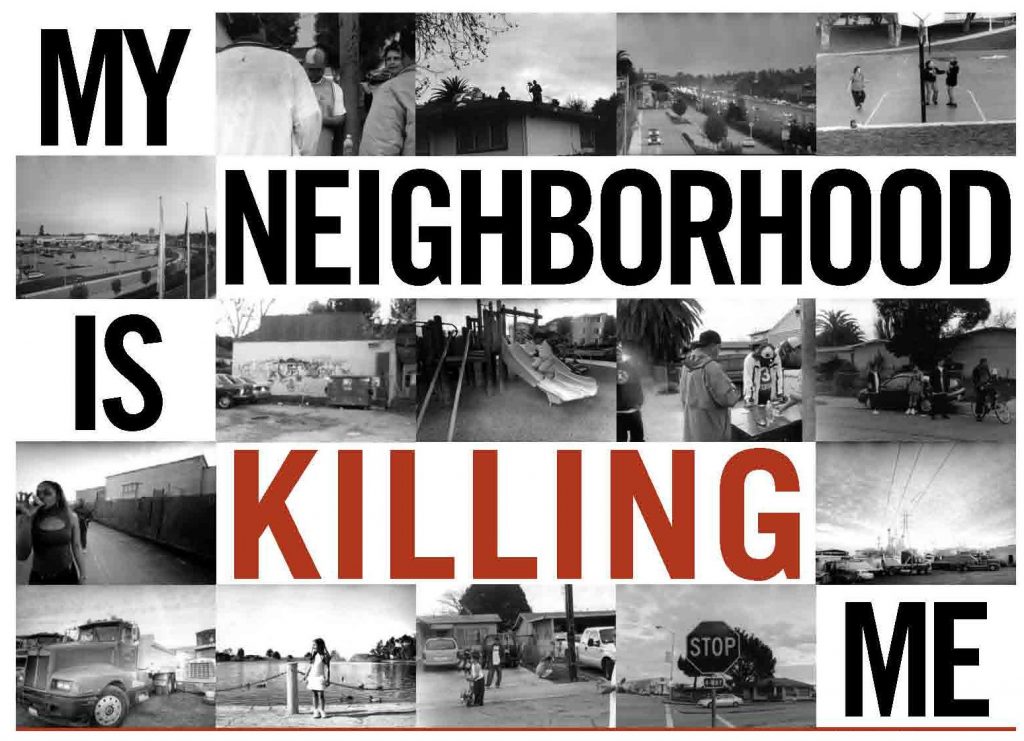
CLICK HERE TO SEND AN EMAIL RIGHT NOW. YOU CAN ADD YOUR OWN COMMENTS
For over a year Southern Sector Rising has been lobbying the City Council for the restoration of the Dallas Environmental Health Commission. With the adoption of the City’s Climate Plan, the Council has a chance to do that next Wednesday , May 27th. But they must hear from you.
Opposition is coming from management in the Office of Environmental Quality and Sustainability who don’t want the word “health” used for this new body. Why? Because this is the same city staff who doesn’t want to responsibility of telling citizens they have bad air or are living too close to industry. Houston has a staff toxicologist advising City Hall. Dallas has a lawyer.
This is why residents must have the Dallas Environmental Health Commission. It serves as a citizen-friendly forum for putting environmental health issues on the official City Hall radar and generates important new public policy proposals. Every Council Member would appoint a member and various experts would serve as advisors. It would instantly elevate the status of Environmental Health at Dallas City Hall.
You can help make this happen by sending a quick “ClickNSend” email to Mayor Johnson and the City Council urging them to vote for a new Dallas Environmental Health Commission. You can add your own comments as well. It takes all of 30 to 60 seconds, and it could mean the difference between Dallas and the next Shingle Mountain.
HERE’S THE LINK TO SEND YOUR EMAIL TO THE MAYOR AND COUNCIL https://www.downwindersatrisk.org/featured-citizen-action/
Thank you.
COVID CONNECTIONS
Downwinders At Risk was already dedicated to fighting for environmental health in North Texas before the COVID virus hit.
Focusing on harmful Particulate Matter, we were already supporting grassroots efforts to reduce the air pollution burdens in predominantly Black and Brown neighborhoods.
We were already building out local capacity to monitor DFW air pollution and advocating an increased role for local cities and counties to protect their residents from environmental health threats.
All of that work was important before March. It’s become more important since then. But our responsibilities on the ground are outstripping our ability to support them adequately. Like other non-profits, the virus has made it harder to do even the simple things.
This week you can help provide some relief.
The Peace Development Fund has chosen to spotlight the COVID-connected work Downwinders is doing, along with that of 12 other grassroots groups across the country to help supplement their budgets during the crisis. The Fund and generous donors are matching every dollar we raise this week up to $10,000 – that’s a $20,00,000 grant on the line.
We have until Friday to raise the $10,000.
Beginning today and continuing thru Tuesday the 5th at Midnight you can help us meet this goal by contributing via our North Texas Giving Day Page.
Then Wednesday thru Friday the Development Fund has its own Downwinders Mighty Cause pay portal you can also use.
We’re using each day this week to show how our various pieces of program work is more relevant than ever before. Today it’s an update on our ambitious new DFW air monitoring network – SHAREDAIRSDFW.
We know everyone is having a hard time, but with the Development Fund matching your dollars, you can make whatever contribution you give go twice as far to benefit those at highest risk.
Thanks for your support,


Evelyn Mayo, Chair
COVID Connects:
Vulnerable Communities to the Need
for Better Air Pollution Monitoring
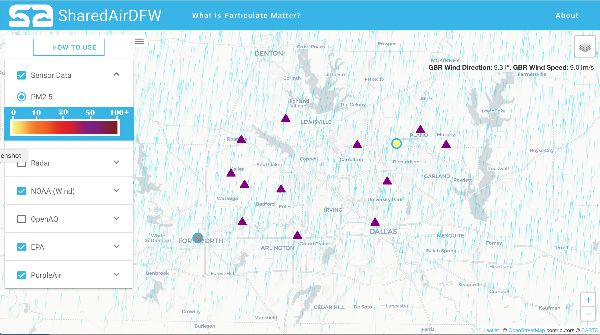
A screenshot of the SHAREDAIRDFW network map being assembled by UTD students and Downwinders at Risk. This map will soon be available at websites hosted by UTD, Dallas County and Downwinders, Only two of the over 100 new monitors are installed (dots) but more are on their way.
What is It?
The SHAREDAIRDFW community air quality monitoring network. 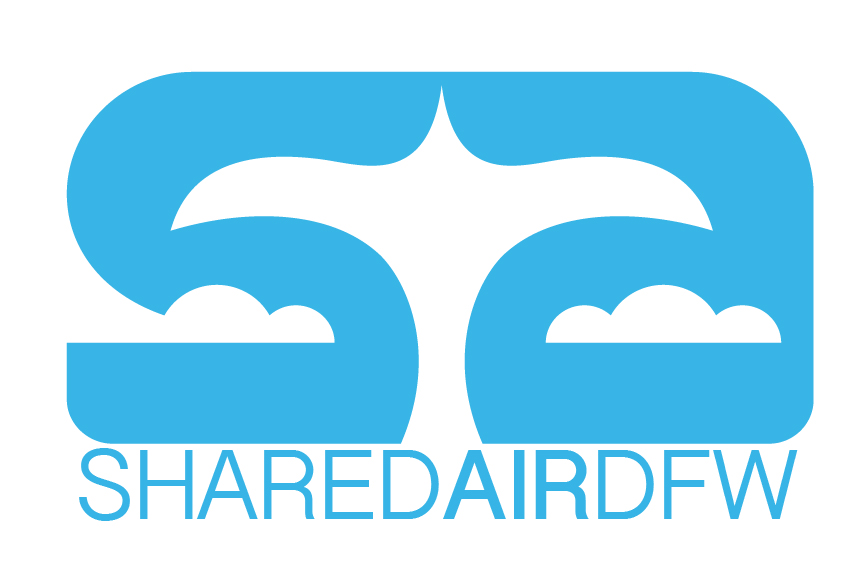 With its partners at UTD, Downwinders is building a new air monitoring network for DFW that will provide real time information from over 100 locations, including industrial hot spots in Joppa, West Dallas and Midlothian.
With its partners at UTD, Downwinders is building a new air monitoring network for DFW that will provide real time information from over 100 locations, including industrial hot spots in Joppa, West Dallas and Midlothian.
Why Do It?
Dallas County’s 2.7 million residents currently share only one EPA 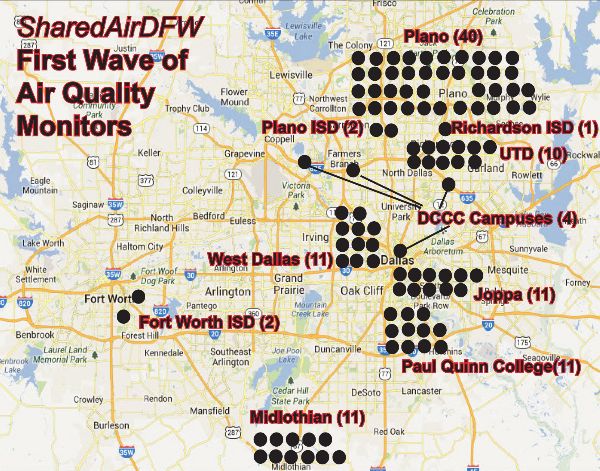 Particulate Matter air pollution monitor, north of downtown. Tarrant County has two and Denton County one. These monitors only reflect very local conditions and don’t reveal pollution levels in “frontline” neighborhoods where industry operates next to homes.
Particulate Matter air pollution monitor, north of downtown. Tarrant County has two and Denton County one. These monitors only reflect very local conditions and don’t reveal pollution levels in “frontline” neighborhoods where industry operates next to homes.
Making pollution burdens more equitable across racial and class lines requires identifying, measuring, and mapping those burdens: “You can’t fix what you don’t measure.” The SHAREDAIRDFW network is the first attempt to permanently map air pollution burdens across North Texas and make that information easily accessible to the public 24/7.Dallas County’s 2.7 million residents currently share only one EPA Particulate Matter air pollution monitor, north of downtown. Tarrant County has two and Denton County one. These monitors only reflect very local conditions and don’t reveal pollution levels in “frontline” neighborhoods where industry operates next to homes.
Making pollution burdens more equitable across racial and class lines requires identifying, measuring, and mapping those burdens: “You can’t fix what you don’t measure.” The SHAREDAIRDFW network is the first attempt to permanently map air pollution burdens across North Texas and make that information easily accessible to the public 24/7.
What’s the COVID Connection?
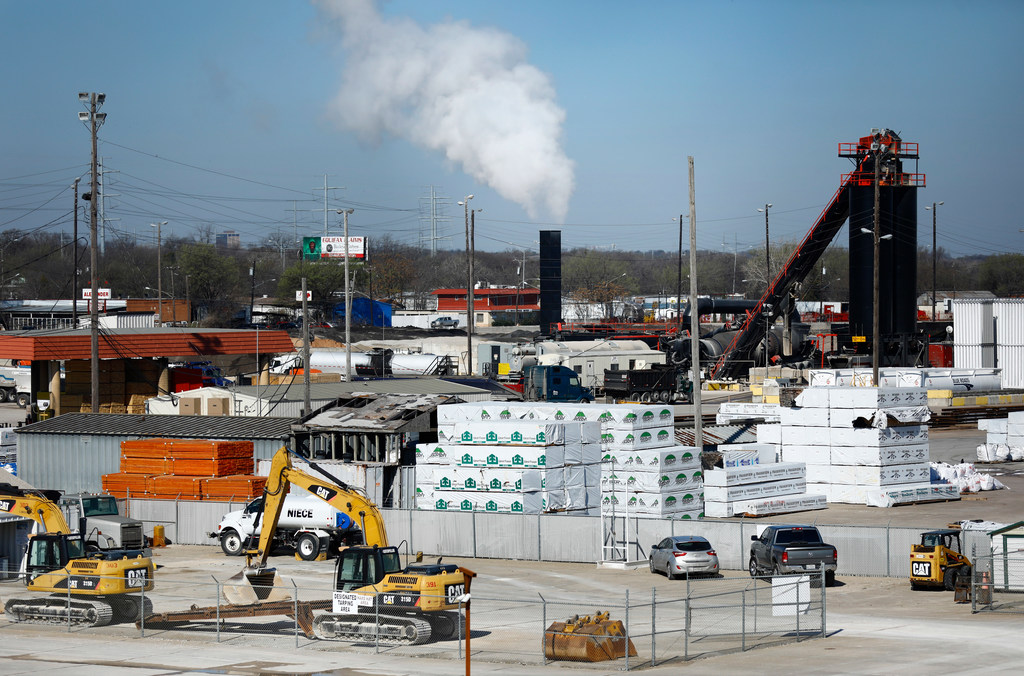
Research being done during the COVID pandemic concludes those living with the highest air pollution burdens are among the most vulnerable to being infected and dying from it. Specifically there seems to be a connection between a person’s exposure to Particulate Matter and Nitrogen Oxide air pollutants and the likelihood of contracting COVID. Past studies from the SARS epidemic also point to a strong link between exposure to air pollution and vulnerability to illness.By mapping where the heaviest air pollution burdens are, we can avoid adding to that burden and pursue policies targeting pollution decreases. We can begin to reverse the circumstances that makes the most pollution-impacted neighborhoods the most vulnerable to disease.
STATUS?
Via teleconferencing, UTD students are finishing up the digital map the Network 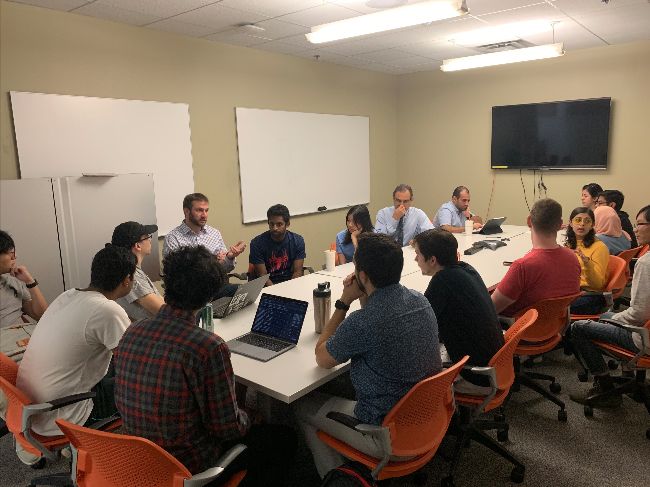 will use to display its real time air quality information. This map is meant to display not only the levels recorded by our own fleet of monitors, but easy access to the handful of EPA and Purple Air monitors in DFW as well.
will use to display its real time air quality information. This map is meant to display not only the levels recorded by our own fleet of monitors, but easy access to the handful of EPA and Purple Air monitors in DFW as well.
The map will be hosted on websites hosted by UTD, Dallas County and Downwinders.The first community monitors are slated for the former Freedman’s town of Joppa, where Downwinders bought a utility pole for the installation of the larger Mothership monitor. We’ve got a contract for Internet service and are now trying to tie down electrical power.
After a planned community meeting in March was canceled, we’re now gearing back up to find hosts for all ten “satellite” monitors. We hope to be able to begin operat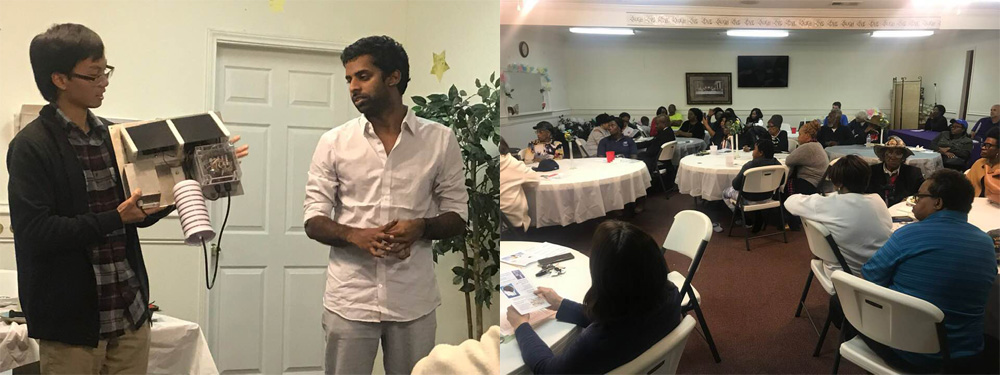 ion this summer.Once we’re up and running in Joppa, West Dallas is next and then Midlothian. In all Downwiwnders will be responsible for 33 of the over 100
ion this summer.Once we’re up and running in Joppa, West Dallas is next and then Midlothian. In all Downwiwnders will be responsible for 33 of the over 100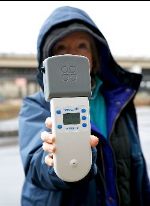 network monitors going up as part of the first wave installation.
network monitors going up as part of the first wave installation.
……MEANWHILE, Downwinders is using its portable monitors to record air quality in front line neighborhoods during the shelter-in-place periods so we’ll have a baseline for what cleaner air looks like.
The Only Public Hearing in the Nation on the Trump EPA Rollback of Methane Emission Rules for Oil and Gas is in Dallas: 8am to 6pm Thursday October 17th
 October 17th is also the date of the only public hearing being offered on one of the most far-reaching rule-rollbacks of the Trump administration – allowing more methane to be released from the nation’s oil and gas wells. And it’s right here in Dallas.
October 17th is also the date of the only public hearing being offered on one of the most far-reaching rule-rollbacks of the Trump administration – allowing more methane to be released from the nation’s oil and gas wells. And it’s right here in Dallas.
In August, the Trump EPA officially proposed its rollback of the methane emissions regulation put in place by the Obama administration. This one-day hearing in Dallas is the single chance for citizens to speak-up and be heard in person. You can bet industry will be out in force to support it.
As many of you already know, Methane pollution is less plentiful than CO2 but is approximately 85 times more potent as a climate destroyer. This is part of what makes it so important to decrease emissions.
But Methane is also a surrogate pollutant for a host of chemicals called VOCs – Volatile Organic Compounds – like the carcinogen Benzene. When you decrease methane emissions from an oil or gas well, you’re also decreasing VOC emissions across the board.
Many VOCs are dangerous toxins and as a class of chemicals contribute to smog. Downwinders at Risk landmark 2015 study of smog sources in DFW identified 50 tons a day of VOCs from regional gas wells and production facilities that contributed up to almost 4 parts per billion of smog.
 Rolling back the Obama Administration rule to limit methane emissions means more toxic exposures to thousands of residents in DFW living within hundreds of feet of wells and facilities. it also means our chronic, three-decade old smog problem, which got worse this summer for the first time in five years, will keep going further south.
Rolling back the Obama Administration rule to limit methane emissions means more toxic exposures to thousands of residents in DFW living within hundreds of feet of wells and facilities. it also means our chronic, three-decade old smog problem, which got worse this summer for the first time in five years, will keep going further south. It’s no coincidence that these hearings take place during working hours when professional lobbyists can attend but working people can’t. Nevertheless DFW residents must step up and represent all those folks from around the US who are not being given a chance to speak.
The public hearing will be held at the Earle Cabell Federal Courthouse, 1100 Commerce Street, in Dallas, in the Red River and Live Oak conference rooms on the 7th floor. According to the official notice, “Because this hearing is being held at a U.S. government facility, individuals planning to attend the hearing should be prepared to show valid picture identification to the security staff to gain access to the meeting room.”
To register to speak, you have to use the online registration form available at https://www.epa.gov/controlling-air-pollution-oil-and-natural-gas-industry/proposed-policy-amendments-2012-and-2016-new or contact Virginia Hunt at (919) 541-0832 to register to speak. The last day to pre-register to speak at the hearing will be October 14, 2019.
Testify downtown and then come and hear Dr. Bullard testify at Paul Quinn.
Southern Sector Rising Went Eyeball to Eyeball with Dallas City Hall over Shingle Mountain. Dallas City Hall Blinked.
After a year of excuses, a determined group of women and their supporters shamed the City into finally taking action to close down the worst environmental health and justice crisis in Dallas.
When the collapse came, it came quickly.
Halfway through their Wednesday March 20th news conference giving authorities an ultimatum to shut down “Shingle Mountain” or face protests and possible civil disobedience, members of the freshly minted Southern Sector Rising Campaign for Environmental Justice learned the City of Dallas was reversing course and moving to close Blue Star’s year-old asphalt hell.
Only a week before, the official party line from City Hall was that the self-described “recycler” had all the permits it needed. Staff said critics’ description of Blue Star’s operation as an illegal dumping ground was wrong. It had “a right to be there.”
Now, on Wednesday….well, now circumstances had changed. The political circumstances that is.
Now there was a new coalition of frustrated Southern Dallas residents and Old School Icons like Peter Johnson, Luis Sepulveda and John Fullenwider staging an emotionally-charged news conference with chants of “Shame on Dallas” ringing loudly up and down the corridors of City Hall. Now there was a publicly-leaked report with incriminating evidence of official wrongdoing. Now there were swarms of cameras and reporters hanging on the every word of a middle-aged, middle-class, horse-loving DART employee who had been ignored for such a long time.
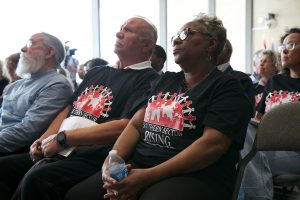
Three Generations of Dallas Environmental Justice Advocates: John Fullenwider, Luis Sepulveda and Marsha Jackson
Led by Marsha Jackson and her Choate Steet neighbors, Temeckia Durrough and Miriam Fields of the Joppa Freedman Town Association and Olinka Green from the Highland Hills Community Action Committee, with Stephanie Timko as media czarina, the Southern Sector Rising Campaign for Environmental Justice did more than just win a huge victory for an much-abused part of Dallas. It gave Southern Dallas residents a new model for effectively changing their circumstances.
An ad-hoc group that hadn’t even existed in February had the temerity to put City Hall on trial in its own lobby for Big D’s most spectacular municipal act of environmental racism in years. And it wasn’t even a fair fight.
An eye-opening state inspector’s report Downwinders sent to reporters a few days before the news conference officially documented permit violations and red flags too large to defend. Although Blue Star had promised the state in April 2018 it wouldn’t store more than 260 tons of waste at its site, it was already storing 60,000 tons in December. Blue Star was supposed to have a Fire Protection Plan. It didn’t. Blue Star was supposed to have adequate funds to close and clean up its site. It didn’t. Blue Star was supposed to randomly test incoming loads of shingles for asbestos. It didn’t.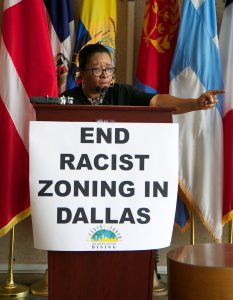
This is how bad it was: Blue Star’s mocking of the law was too much even for Gregg Abbott’s Texas Commission on Environmental Quality. Or the City of Dallas.
So long before the last speaker spoke in the Flag Room, news came that the City had pulled the Certificate of Occupancy for the largest of the two Blue Star tracts, something it had previously said wasn’t possible. Then it announced it was taking the company to court the next day to get an emergency Temporary Restraining Order to close Blue Star down.
That City staff could so shamelessly pull off such a dramatic flip flop over a matter of a few hours is testimony to both the fury fueling the Campaign, and the overwhelming evidence that Blue Star and its government enablers had allowed a full-blown illegal dump to grow… and grow…and grow. The only thing missing from the turnaround was an apology and acknowledgement to the women that had forced City Hall’s hand.
In Thursday’s hearing on the Restraining Order, the City of Dallas cited a number of missing municipal and state permits it now said Blue Star needed, including a Special Use Permit, an air quality permit, and a permit for storage in the flood plain – none of which the City had demanded when Blue Star had opened for business a year earlier. Despite the lack of these permits the City was now saying were essential, it had kept telling reporters, Council Members, and residents alike that Blue Star was a legal business right up until the time of the news conference.
It wasn’t. Ever. But it took a group of frustrated Southern Dallas residents to expose that lie.
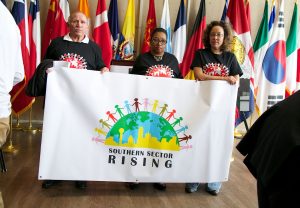 Of course in the hearing itself the heretofore lack of official city concern about these lacking permits was perturbing in the extreme for the attorney representing Blue Star, who said City Hall had already signed-off on its operations.
Of course in the hearing itself the heretofore lack of official city concern about these lacking permits was perturbing in the extreme for the attorney representing Blue Star, who said City Hall had already signed-off on its operations.
“The City told my client there were NO air quality problems,“ he protested to the judge. That was undoubtedly a true statement. But that conclusion was rendered before a brigade of angry residents showed up at City Hall demanding Dallas enforce the law.
Now, presto-chango, the City was emerging out of its dilapidated telephone booth with its moldy Toxic Avenger costume on and finding plenty of air quality problems, albeit in a anecdotal, non-quantifiable, way.
Because despite being “very concerned” about air pollution from Blue Star, the City of Dallas never monitored air quality from the facility before it got to court. Neither did the state. Only Downwinders at Risk, plugging-in one of our own portable PM monitors on the top of Marsha Jackson’s window unit for days at a time, captured any credible scientific evidence of air pollution harms.
Those results were released at the March 20th news conference and showed levels of Particulate Matter pollution that UNT’s Dr. Tate Barrett concluded “poses a significant health risk to the residents.”
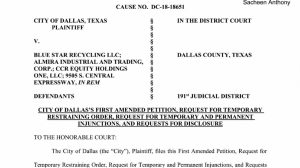
But in court, the City didn’t even mention those EPA-calibrated results.
For the first time in memory it was the regulators using only their senses to call for a crackdown – what they saw and heard and smelled at Blue Star’s site – and citizens showing up with Real Science.
Lacking any monitoring data of their own, Dallas city attorneys sounded like countless over-matched and overwhelmed residents from past TCEQ hearings, pleading with the judge to accept their word that the air pollution was so darn obvious…if not directly quantifiable because, well, no, we didn’t actually do any monitoring. We don’t know how to do that.
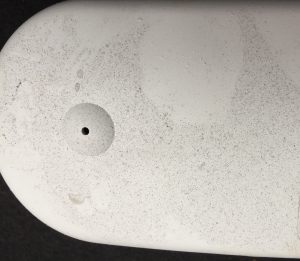
A layer of asphalt dust coated a Downwinders air quality monitor while it was recording levels of PM pollution at Marsha Jackson’s house in early March
This lack of any data to back up its air pollution claims was one of the most embarrassing parts of the hearing for the City. One wonders when James McQuire and his Office Of Environmental Quality & (Rockefeller) Sustainability’s stubborn refusal to buy its own air monitors will eventually cost the City (and its residents) in court.
But every time the City’s case looked in trouble, Blue Star’s attorney dug a deeper hole. He wanted the judge to know “shingles make really good fill” and that the spring-fed creek that ran through the company’s site was merely “a drainage ditch” and asking, after all judge, what is the true and right definition of “combustible” under Texas law?
Judge: “It means catch fire.”
Everyone but the Blue Star attorney chuckled.
After 45 minutes, Judge Gina Slaughter had heard enough and ruled in favor of the Restraining order. It took effect March 22nd and runs until Midnight on April 3rd.
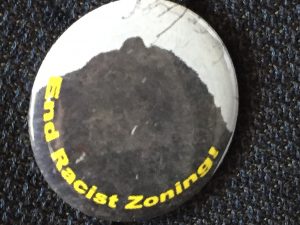 Before that happens, an 11 am Wednesday morning hearing will be held in the same courtroom to decide whether to extend the Temporary Order into a more permanent one. Word is that Blue Star was caught doing business during the last week when it wasn’t supposed to be on site at all. If true, it seems unlikely Blue Star will be granted a reprieve, despite the optimism displayed on the company’s website. “We fully expect to be open on Thursday April 4th, 2019″ it proclaims.
Before that happens, an 11 am Wednesday morning hearing will be held in the same courtroom to decide whether to extend the Temporary Order into a more permanent one. Word is that Blue Star was caught doing business during the last week when it wasn’t supposed to be on site at all. If true, it seems unlikely Blue Star will be granted a reprieve, despite the optimism displayed on the company’s website. “We fully expect to be open on Thursday April 4th, 2019″ it proclaims.
Not if Marsha Jackson, her friends in the Southern Sector Rising Campaign, and now their reluctant ally, The City of Dallas, get their way.
URGENT CALL TO ACTION FOR MARSHA JACKSON AND DALLAS’ SOUTHERN SECTOR
12 Noon, Wednesday March 20th
Dallas City Hall Flag Room 6th Floor
JOIN US FOR THE PUBLIC LAUNCH OF THE
SOUTHERN SECTOR RISING
CAMPAIGN FOR
ENVIRONMENTAL JUSTICE
Downwinders at Risk has joined with the the Joppa Freedman’s Association, Neighbors United/Vecino Unidos, the Highland Hills Community Action Committee, Sierra Club/BeyondCoal, Pax Christi Dallas, and other Dallas groups in initiating a campaign aimed at uniting residents who live along and south of the Trinity River, and their allies to say “enough is enough.”
The Southern Sector Rising Campaign for Environmental Justice seeks to end decades of racist zoning forcing industrial polluters into predominantly Black and Brown residential neighborhoods and more equitably distribute Dallas’ pollution burdens.
The Campaign’s First Target

SHINGLE MOUNTAIN
The most serious on-going environmental justice crisis in Dallas –
The Blue Star asphalt shingle sham recycling operation,
aka, “Shingle Mountain” aka “the Asphalt Alps.”
What makes this situation such a crisis?
Volume – thousands of tons of waste are accumulating with new loads arriving daily. The mountain is now4-5 stories tall.

Proximity – fine dust spewed and stored across the backyard fences of families with kids

Toxicity – Asphalt shingle waste is chock full of carcinogens
Help us apply more public pressure.
The Campaign’s First Action:

Public Launch @ DALLAS CITY HALL
WEDNESDAY MARCH 20th
12 NOON
FLAG ROOM 6th FLOOR
JOIN US AS WE PROPOSE A PRO-ACTIVE
DALLAS ENVIRONMENTAL JUSTICE AGENDA
1. The City of Dallas must immediately close the Blue Star Asphalt operation and begin to clean up the mess the company has created along the South Central corridor.
2. The City must include an equity provision in the City’s new Economic Development Policy prohibiting concentrations of polluters/pollution in the same neighborhoods.
3. The City must pass a moratorium on any new Industrial permits south of the Trinity River until that new industrial equity policy is in place.
4. The City must restore the City’s Environmental Health Commission to allow for a more resident-friendly process for hearing environmental nuisance and health problems.
5. The City must create a Joppa Environmental Preservation District prohibiting any new industrial permits in that historic Dallas Freedman’s community, phasing-out of existing industrial zoning there, and better protecting residents from pollution exposure.
March 20th’s launch at City Hall will begin with a video by local filmmaker Rick Baraff examining the personal toll Blue Star’s operations have had on the families who live around it. We’ll hear from Marsha Jackson, Biance Morales and members of her family as well as some very special guests.
It’s expected that at least one lawsuit, and maybe others, will be announced on March 20th on behalf of Ms. Jackson and the Morales’.
Campaign representatives will also be submitting language for specific ordinances the Dallas City Council to pass to implement the five campaign goals, announcing weekly pickets and a warning to the City that if Blue Star isn’t shut down by Earth Day, Monday April 22nd, we’ll be attempting to blockade new trucks of shingles from being dumped.
The Campaign’s First Protest

Picket Line at the front gate of Blue Star
12 noon to 2 pm, Saturday March 23rd
9527 S. CENTRAL EXPRESSWAY
VOTE WITH YOUR FEET TO HELP THIS NEIGHBORHOOD
IN ITS TIME OF CRISIS
This first protest at Blue Star will reflect Ms. Marsha Jackson’s deep ties to the Southern Dallas trail riding community. We’ll have a check-in tent with water, Rules of the Road and the latest information. We can supply some signs and help you create your own. The important thing is to show-up and support the effort to clean-up this horrible mess and the messes that decades of racist zoning have produced all over the Southern Sector.

Incompetence or Negligence? It Doesn’t Matter: Local Air Pollution Catastrophes on Oct 19th & Dec 11th Show Why DFW Must Have Its Own 21st Century Independent Air Quality Monitoring Network
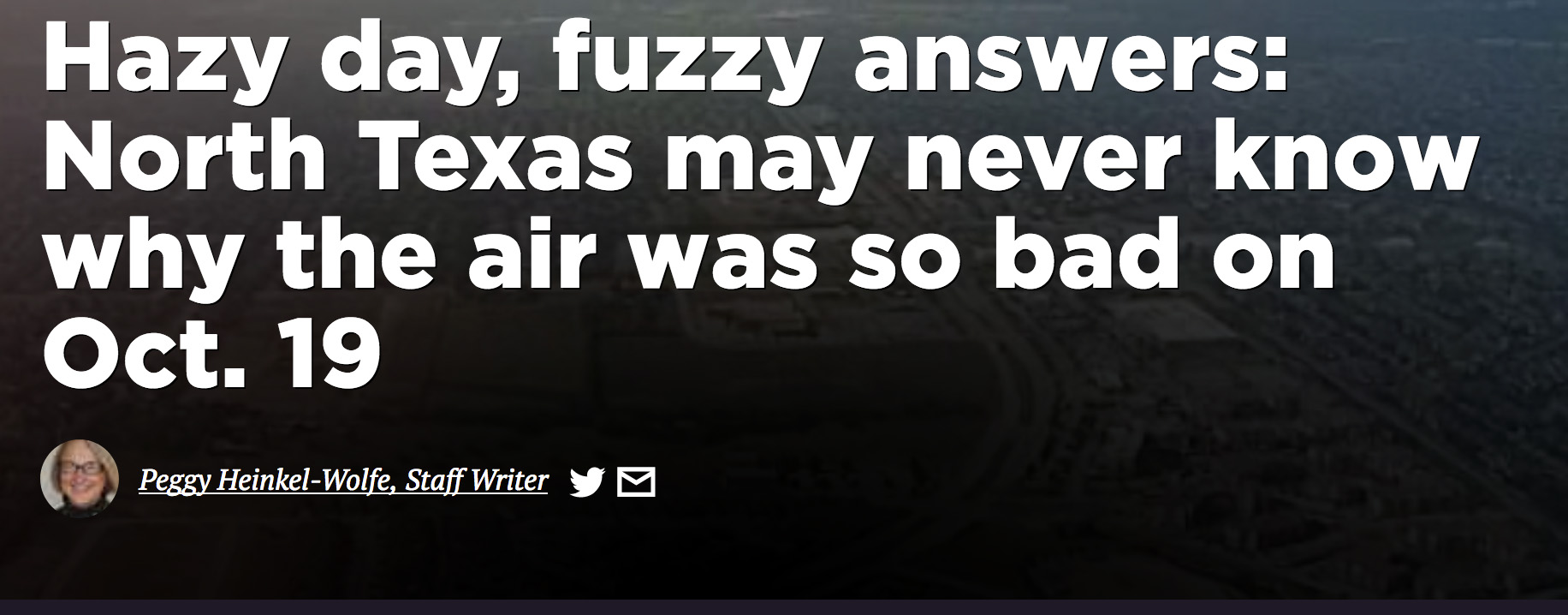
Q: What caused PM and Ozone pollution to spike so high and fast on Oct 19th that health alerts had to be issued from Dallas to Denton?
A: The Texas Commission on Environmental Quality couldn’t care less.
That’s the take-away from Peggy Heinkel-Wolfe’s story that appeared over the weekend in the Denton Record Chronicle.
You may remember we reported on the mystery shortly after it happened and tracked down all the local and non-local suspects cited by officials in the media that day. None of them turned out to be the cause of an air pollution incident that was so potent it raised the entire regional ozone average a whole part per billion and forced PM levels into the triple digits.
Heinkel-Wolfe goes one step further and makes inquires from the TCEQ itself. And the run around she gets is Catch-22 material.
TCEQ says they can’t investigate an air pollution problem unless there’s a known cause. But if there’s a known cause, what you’ve got there really isn’t an investigation any more, it’s an enforcement action, isn’t it?
This article may be the single most compelling case for why DFW needs its own locally-controlled air quality monitoring network. Find it here.
Q: Where are the results of the air samples the Dallas Fire Department supposedly took when a West Dallas Recycling was sending large plumes of black smoke over the surrounding and downwind neighborhoods on December 11th?
A: Nobody seems to know.
A huge pile of metal scrap burned and smoldered for over 24 hours at Sunshine Recycling on Ruder Street in West Dallas on December 11th. Thick plumes of smoke streaked the sky for half a day and into the night.
According to WFAA-TV, a Fire Department Hazardous Materials response team was on site because there were hazardous materials on site – although exactly what those were, or are, remain nameless.
That evening the Dallas City Councilman who represents West Dallas, Omar Narvaez, posted on his FaceBook page that “The Fire Dept has conducted testing and there is no hazardous materials burning.”
Really? Because when a scrap yard like that catches fire, you can bet there’s “hazardous materials” burning whether it’s officially noted or not. Plastic tubing and hoses become Dioxin-generating embers. Used oil has all kinds of metals in it that attach themselves to the smoke particles. Vinyl can generate very toxic fumes. Just the PM pollution from the smoke alone was enough to trigger all kinds of harmful health impacts. Very likely the entire pile of metal waste that was burning that night was indeed “hazardous.”
But OK, you say you took tests and they showed nothing out of the ordinary? Let’s see them. In December Downwinders submitted a Texas Open Records Act request to the City of Dallas for the results of those tests. We’re still waiting. As of today, and despite three phone calls to the Open Records Division of the City Secretary’s office, we still don’t have what it’s supposed to take no more than 10 business days to get. It’s been a month and counting. We’re trying to get some legal help to extract the information. Stay tuned.
For $500 a piece, we can install a dense grid of PM monitors across the region, tie them all together and present the information to the public in a transparent accessible way. It can be locally-controlled, directed by scientists, and independent of political influence.
It would automatically track plumes in real time, not an hour ago. It would give you reliable and specific levels of pollution rather than vague reassurances. It would transfer the power from officialdom to citizenry.
That’s the new Network we’re building. Stay tuned.

